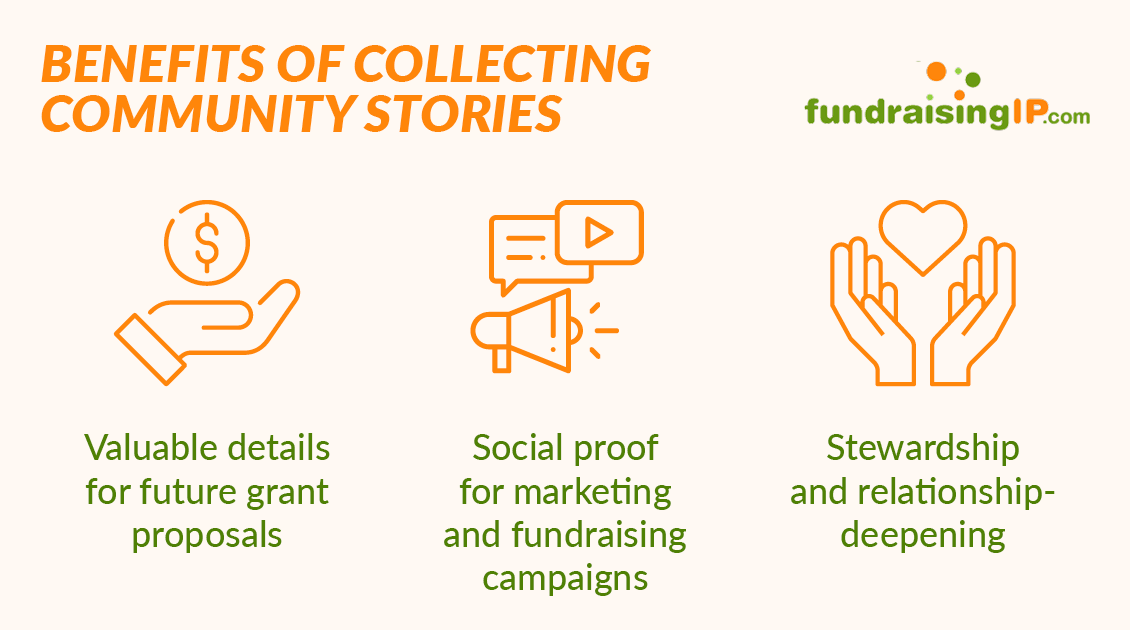Nonprofit organizations must always be on the lookout for funding possibilities. Whether these are foundation grants, community awards, or gifts from various corporations, nonprofits should be prepared to write effective proposals when the perfect opportunities arise.
Maybe you’ve already learned the basics of grant writing as a freelance grant writer or in-house fundraiser—great! Compelling stories can hold a lot of sway. They grab our attention and make the human connections and impact of your organization more real and vivid to readers.
But don’t forget that you must also back up your proposals with hard facts and numbers. Funders have big decisions to make, and they can’t rely on stories alone. Numbers prove to funders that your nonprofit is the best recipient to drive impact with the grant funding.
What’s the best habit you can build to help streamline the data collection process and improve your grant proposals going forward?
Our Top Tip: Make It Ongoing
The idea of gathering data, analyzing reports, and scouring public sources might not sound that easy or fun. However, data collection for grant writing doesn’t have to be a difficult job. It’s actually very easy when it’s done on an ongoing basis.
When your organization makes an effort to continually track its data, pulling relevant reports and statistics for grant proposals will be a breeze. Consistent data collection will also streamline your post-award grant management process. This applies on two fronts. You should collect data about both:
- The impact of your programs (like the number of constituents served and other, mission-specific KPIs)
- The efficacy of your fundraising (like donor acquisition and retention rates that help signal the level of engagement and energy behind your mission)
Organizations use centralized databases or CRM (constituent relationship management) systems to record and organize data about both programming and fundraising. While some data needs to be entered manually (like written volunteer signups and in-person program attendance), tons of your nonprofit’s interactions likely occur online today.
In these cases, software integrations between your various tools and your CRM can automate the process of recording new data. For example, an integration between your CRM and email marketing platform could automatically capture open and click-through data and attribute it to the correct email address and constituent/donor in your database.
If you haven’t yet, look for integrations that may be available to you through the tools you’re already using.
Aside from the tech side of things, there are other ways to infuse data collection into your operations:
- Before each new event, campaign, or program, make it a priority to set specific goals and KPIs, then determine exactly how you’ll measure them.
- Evaluate your processes for sign-ups, sign-ins, and more to make sure they’re truly capturing the information you need.
- Review your existing data on constituents and donors. Give it a quick audit. Is it useful? Are there gaps? Can you draw conclusions about your nonprofit’s impact based on it?
- Take a deep dive into the industry literature and research around your mission and community. Government agencies and reputable NGOs regularly publish reports that you can reference in grant proposals. Read new editions as they’re released.
As you work to build a data-savvy culture at your organization, you’ll be in a great position to start putting the information you have to use. Let’s take a closer look at the three most important data strategies to master for grant seeking.
Strategy 1: Focus Your Data Collection
As you collect data and prepare for grant applications, information will come from a variety of places. But to effectively serve your needs, that data collection needs to be narrowed down. An overwhelming trove of data, some useful and some irrelevant, will easily waste more time and resources in the long run.
Keep your eye on the ball and focus your data collection on the areas that you know most grant applications require. These include:
- The community need. You can gather data that illustrates the need for your nonprofit’s work from public agencies like the Bureau of Labor Statistics. You can also survey constituents and your community to determine what they consider to be important needs to be fulfilled—even a few simple questions to assess the importance of certain projects or demonstrate demand for them will be helpful. This data can then provide the substance of any needs statement of a grant proposal and help guide decision-makers on what projects ought to be funded or initiated.
- Routine cost and revenue figures. This is more of an accounting function than anything else. A nonprofit organization ought to have a bookkeeper who is keeping track of accounts receivable and accounts payable. Accounts payable is extremely important for cost estimations that will determine the size of a grant award requested. Incidentally, federal and state governments do require tax filings, so cost and revenue information must be collected and properly compiled to complete any government forms, anyway.
- Volunteer hours. Funders love to see a commitment from the community in the form of volunteer participation. You should not only track hours as part of your volunteer management process but also assign a dollar figure to properly assess the value of the pro bono service provided. It can be as simple as determining an hourly value for volunteer work (e.g. $12 per hour). When all the volunteer hours are added and multiplied by the determined hourly value, it produces a pro bono figure that can be substantial and impressive to funders.
- Mission achievement. Service data collection allows you to paint a picture of how your nonprofit works to meet its mission. This data might take the form of attendance records of job training classes, the amount of material recycled in a given year, or the number of clients serviced. These can show a funder or any individual donor that the nonprofit is actively working for the common good.
Strategy 2: Be Organized With Each New Grant
It’s no secret that grant seeking is complicated. Collecting data on an ongoing basis is one way to simplify and reduce the number of tasks that need to be completed within a tight timeframe.
However, if the actual workflows and organizational processes you use for grant seeking aren’t up to par, all that preparation could go to waste, leading to mistakes and miscommunications along the way.
This goes beyond the collecting and organizing of the data itself. Your data should be collected and organized in centralized, easily searchable databases, making it easy to begin finding the right information once you identify what you need. But how will you determine the data you need? Who will gather and report it?
Learn Grant Writing recommends starting each new grant project with a kickoff meeting to orient everyone involved and lay out a baseline understanding of what’s needed.
Whoever is leading the project should have already closely studied the grant guidelines and outlined the requirements by this point, which should make it easy to walk through them as a team and determine the specific information that will be helpful to reference in each section. Take note of where that data can be sourced, either internally (in your CRM, financial records, etc.) or externally (government statistics, industry reports, etc.).
It’s also a good idea to begin coordinating with your team as early as possible to hammer out a preliminary budget for your proposed project. This information might impact many other parts of your proposal, so the earlier you can project a budget, the better.
From here, host regular check-in meetings with the team to sync up on progress. A steady cadence of check-ins and the roadmap you lay out in the kickoff meeting will give your entire grant writing project an organized structure. You’ll be well prepared to fill in the gaps in your proposal’s narrative, illustrate key claims, prepare additional attachments, and more without feeling rushed or overwhelmed at the last minute.
Strategy 3: Collect Community Stories
Qualitative information, not just numbers, can also be extremely useful for grant applications.
Stories are the human side of any nonprofit mission. They speak to the reasons why an organization’s work matters and how successful the efforts have been. Stories from constituents, donors, partners, and sponsors will complement your data and demonstrate its real, tangible impact, ultimately contributing to an all-around stronger proposal.
To make story collection an ongoing part of your campaigns and programs, regularly ask for feedback. Personally reach out to those constituents and donors who are especially engaged, and sit down for a quick chat to learn more about their experiences. This practice brings several simultaneous benefits:

- You’ll collect valuable stories for future grant proposals.
- These stories can double as marketing testimonials, strengthening your fundraising appeals and attracting more potential supporters.
- One-on-one outreach and feedback collection are extremely effective forms of stewardship and will go a long way to deepen your organization’s ties with individuals.
Record these stories and tag them with a date and any associated campaigns, programs, or events. Just be sure to always get permission from individuals to use their words and/or names (offering to change their names or attribute them anonymously as needed to protect privacy). Depending on the context, you may also ask individuals to sign releases.
You may think data collection is boring, but once it becomes routine, it’s easy, and it pays off.
Better facts and details within quick reach make for stronger, more compelling grant proposals and fundraising appeals. No more last-minute chaos trying to compile and analyze the right data for your proposal.
Improve your marketing strategies with more impactful stories. Attract more supporters and community members to your campaigns and programs by telling the complete narrative of your organization. The bottom line—however the data is used, it will help your nonprofit.
To learn more about grant writing, specifically, and best practices for collecting data, staying organized, and managing complex projects, check out online grant writing courses and classes. Just be sure to research beforehand to ensure a course will meet your needs and experience level.
